National Employment Centres. Part 2: Inclusive wayfinding
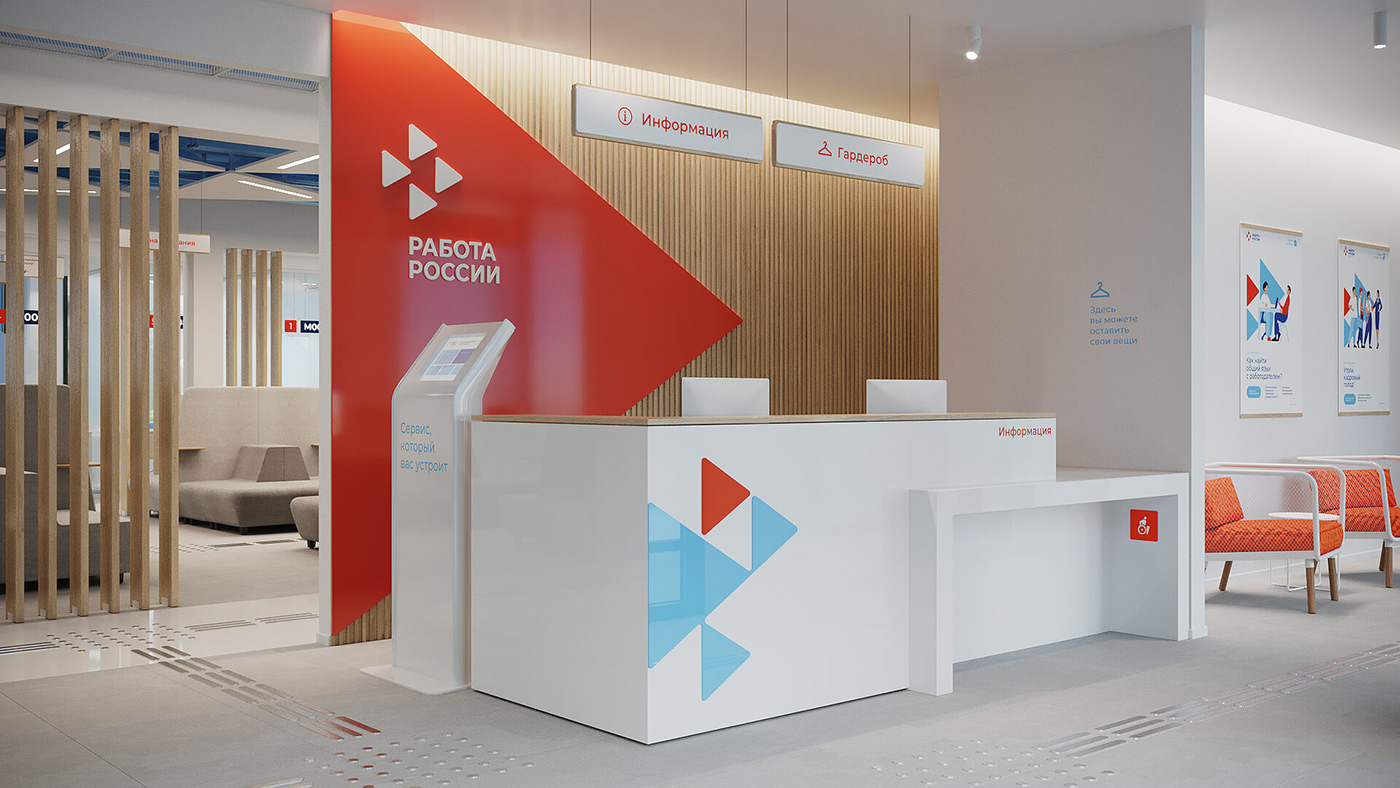
In the first part of our storytelling about the project for National Employment Centers we showed how we found a solution for brand's visual style and communications. This next part is about about renewing the wayfinding system in the employment centres with regard to inclusion.
After the launch, the brand faced inconsistent approach to designing employment centers in different regions. The lack of typology for the centers affected wayfinding. Each region did it differently, which lead to several main problems: visual inconsistency inside the centres, lack of route prioritisation and absence of navigation elements for people with disabilities. Our aim was to develop a clear and accessible wayfinding system based on three principles: clarity, effectiveness and humanism.
After the launch, the brand faced inconsistent approach to designing employment centers in different regions. The lack of typology for the centers affected wayfinding. Each region did it differently, which lead to several main problems: visual inconsistency inside the centres, lack of route prioritisation and absence of navigation elements for people with disabilities. Our aim was to develop a clear and accessible wayfinding system based on three principles: clarity, effectiveness and humanism.
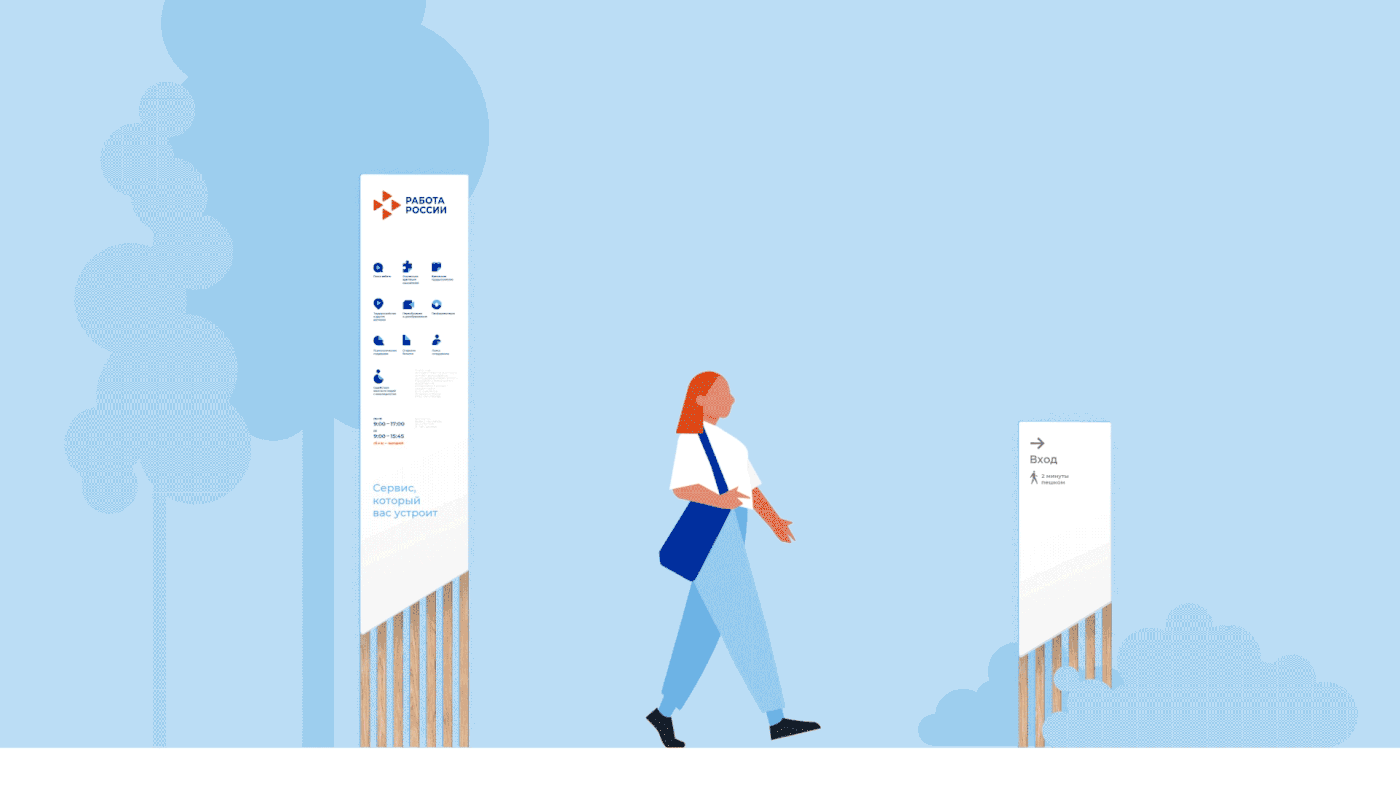
Consistency in the interior design and wayfinding helps visitors find their way around the center and also raises awareness of the brand. Wayfinding system is built around typical elements united in a system, but it is developed for each particular employment center with regard to interior, layout concept and customer journies.
In order to create an effective wayfinding system, we analyzed customer journies, which helped find decision-making points. Each group of customers has its own customer journey: candidates can look for service desks as well as additional services, like study rooms or a phychiatrist’s office; employers usually visit service desks, but can also stay in the coworking room or drop into the conference hall.
In order to create an effective wayfinding system, we analyzed customer journies, which helped find decision-making points. Each group of customers has its own customer journey: candidates can look for service desks as well as additional services, like study rooms or a phychiatrist’s office; employers usually visit service desks, but can also stay in the coworking room or drop into the conference hall.

Wayfinding should visually match the existing interior, that’s why elements are made of several materials: wood for the base and coloured acrylic for the front surfaces. Wayfinding elements look low-key but expressive like the visual style itself.
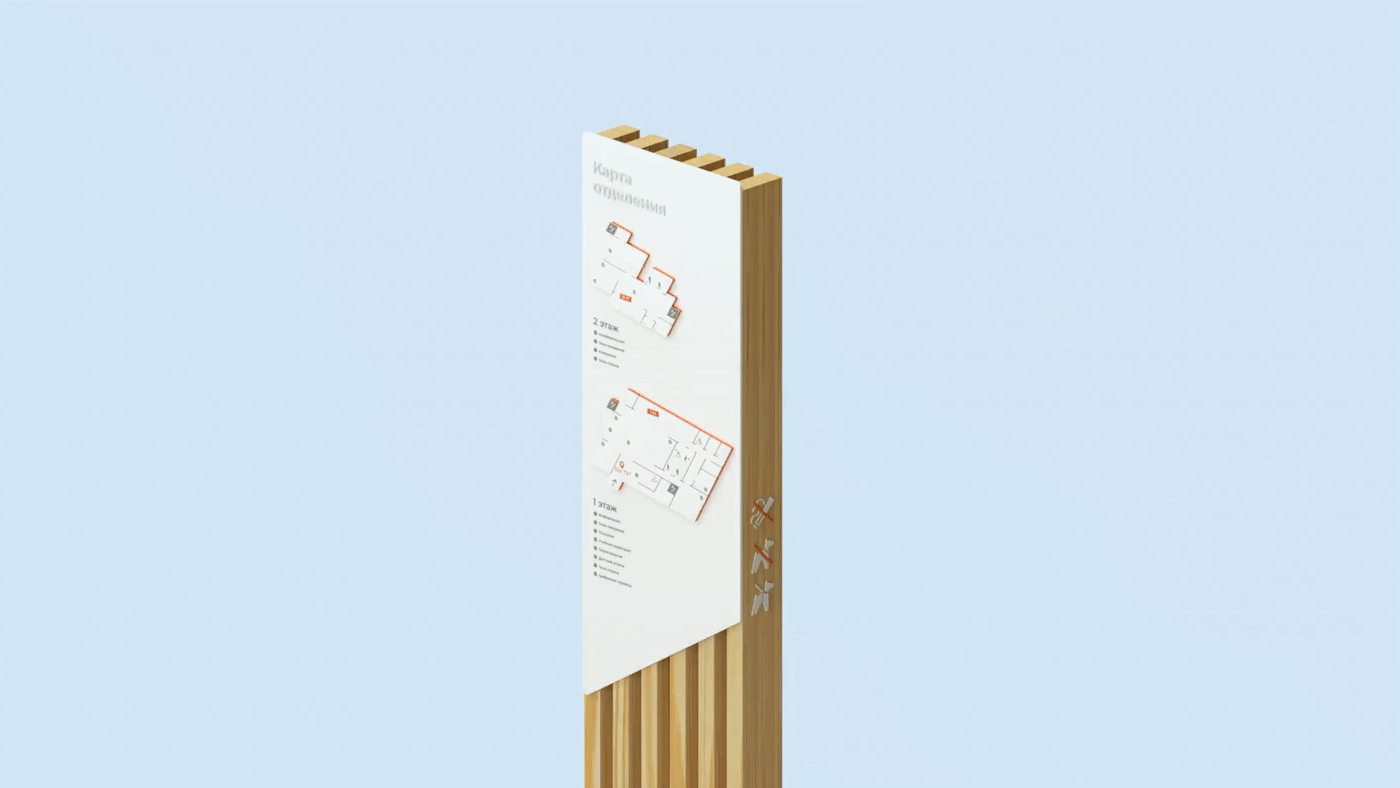
Simple terminology, strict hierarchy of messages and colour coding allow visitors to understand the information and form the right impression of the brand. The most important information is the most noticeable. The main attention is drawn to the service desks, additional services go second, general services, like wardrobe or WC, come third. Floor and wall wayfinding elements have also contain information in Braille lettering.

Exclusively for the wayfinding system we developed a set of icons in brand’s visual style and colours. They could be easily seen from a distance and match the main icon set.


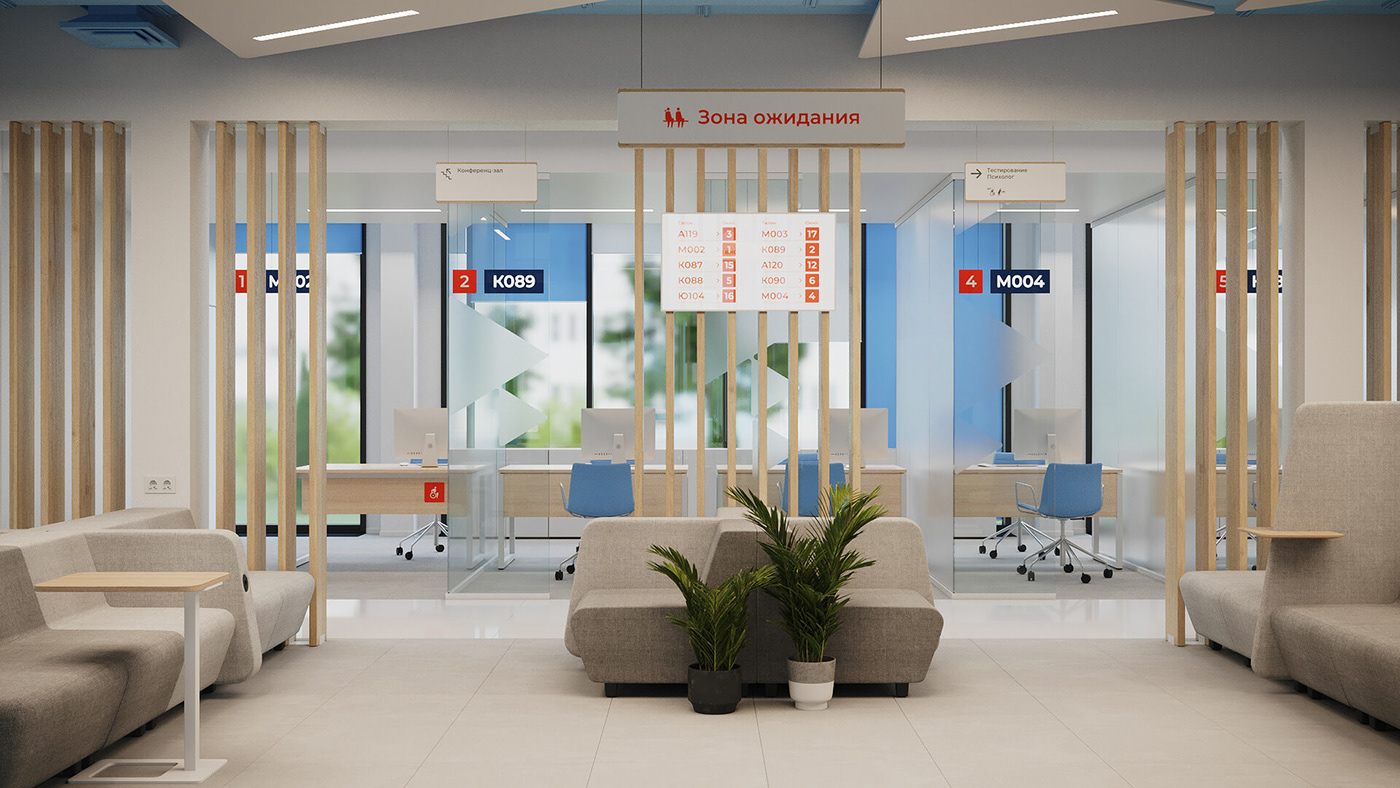
Inclusion is the main principle of wayfinding. We created an inclusive system, where people could find their way, regardless of their physical features. Special customer’s journey is different from regular customer’s journey, so we have to make sure he/she finds the information he/she is looking for.
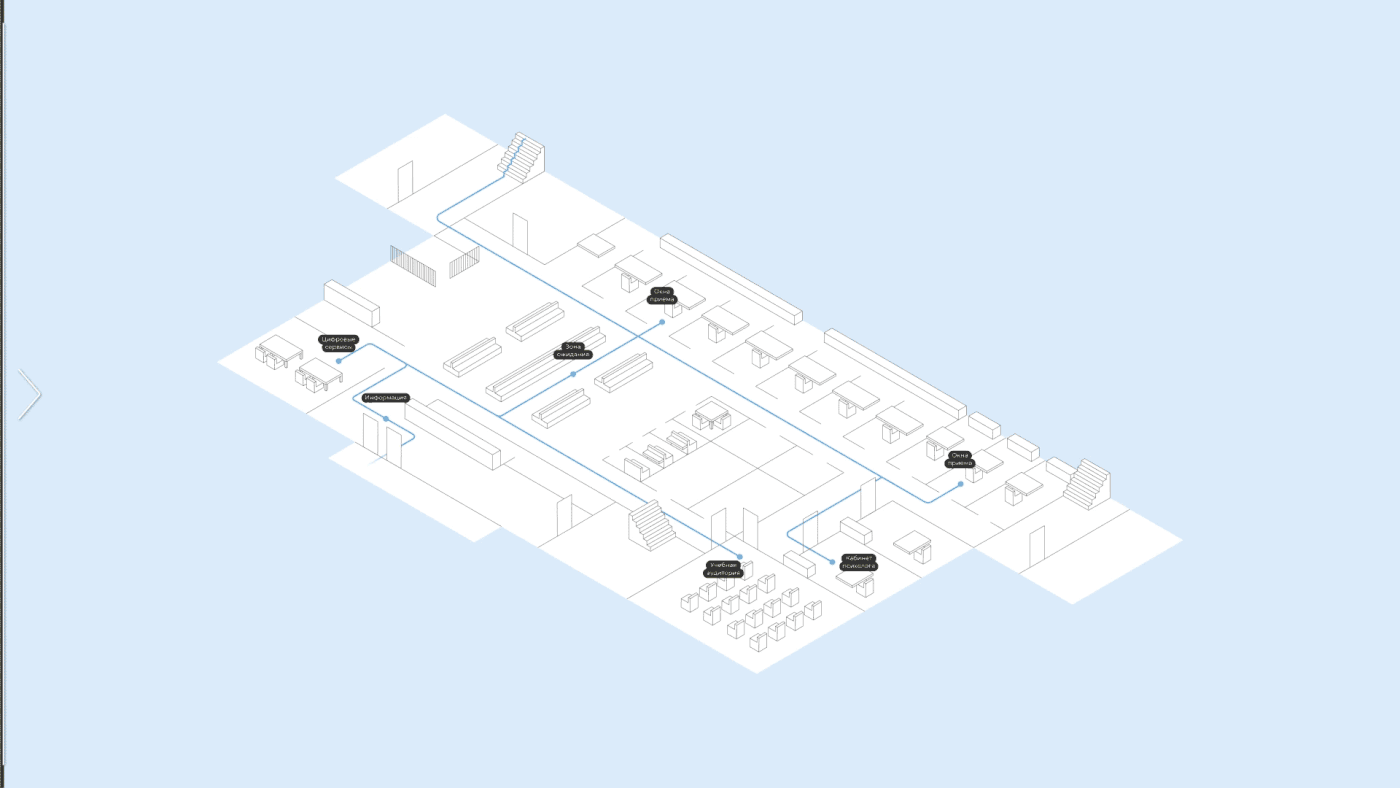
For the blind people we added information in Braille script to the wayfinding elements. These elements are situated in the blind people access zone and help them navigate the employment center.


The visually impaired people need a certain level of contrast in the wayfinding graphic elements. We chose to use the bold and recognizable orange colour. It helped to get rid of the inconsistent plates used everywhere in the centers.

For the blind people we created transparent wayfinding elements with Braille script. They duplicate the information from pillars and suspended signs and are located in the decision-making points on the level suitable for people with disabilities.
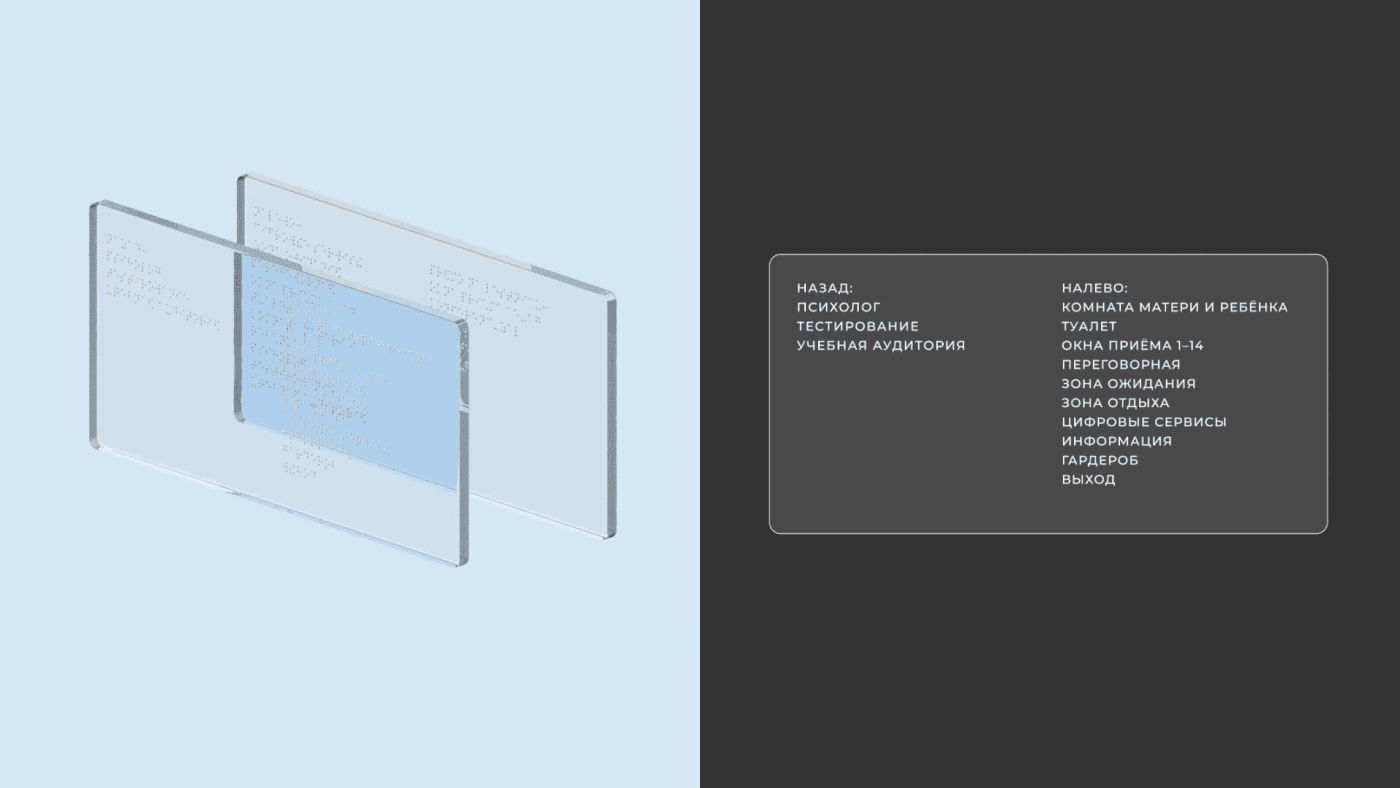
Our agency has developed a clear and simple wayfinding system that helps orientate in the employment centers, easily find information and feel comfortable all the way.
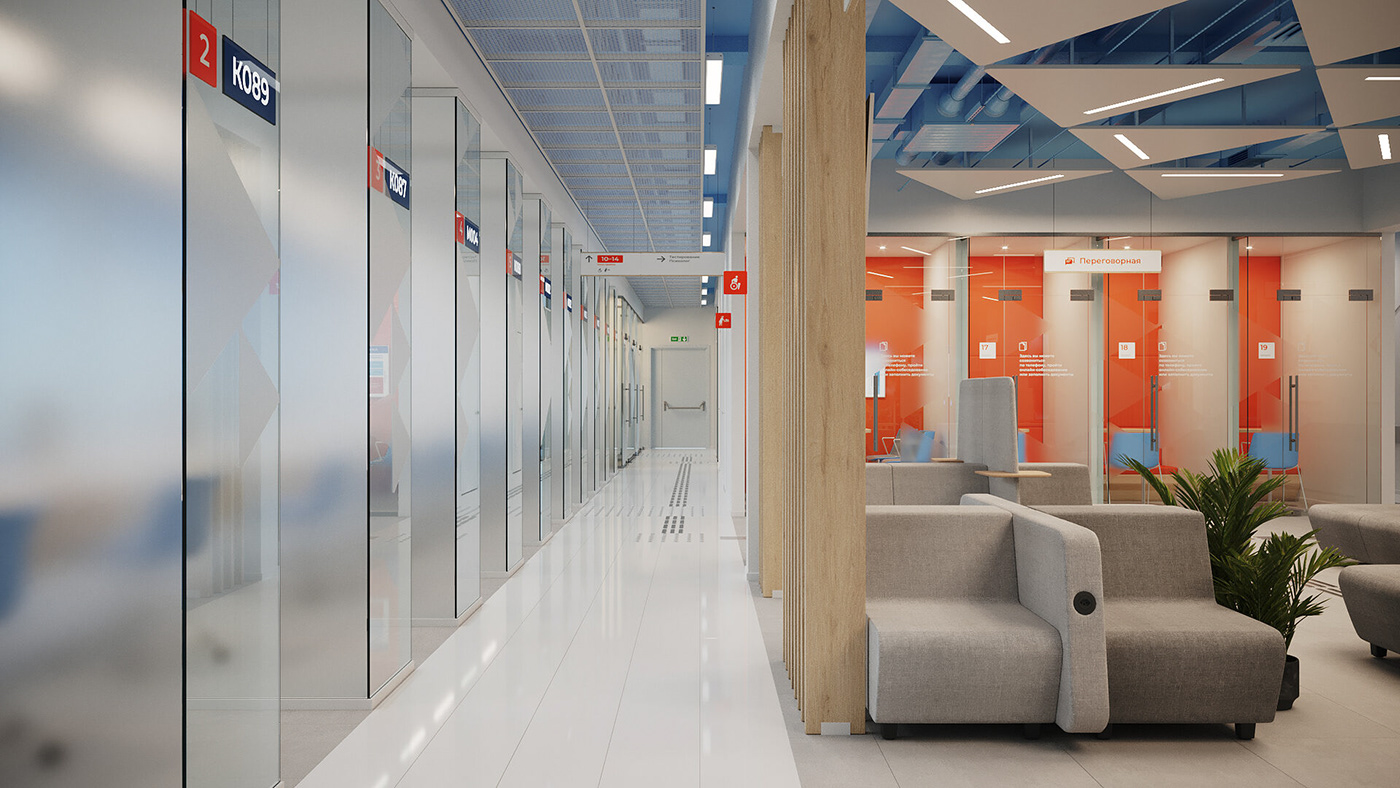

Wayfinding principles and design rules can be found in the large brand guide for the National Employment Centers.
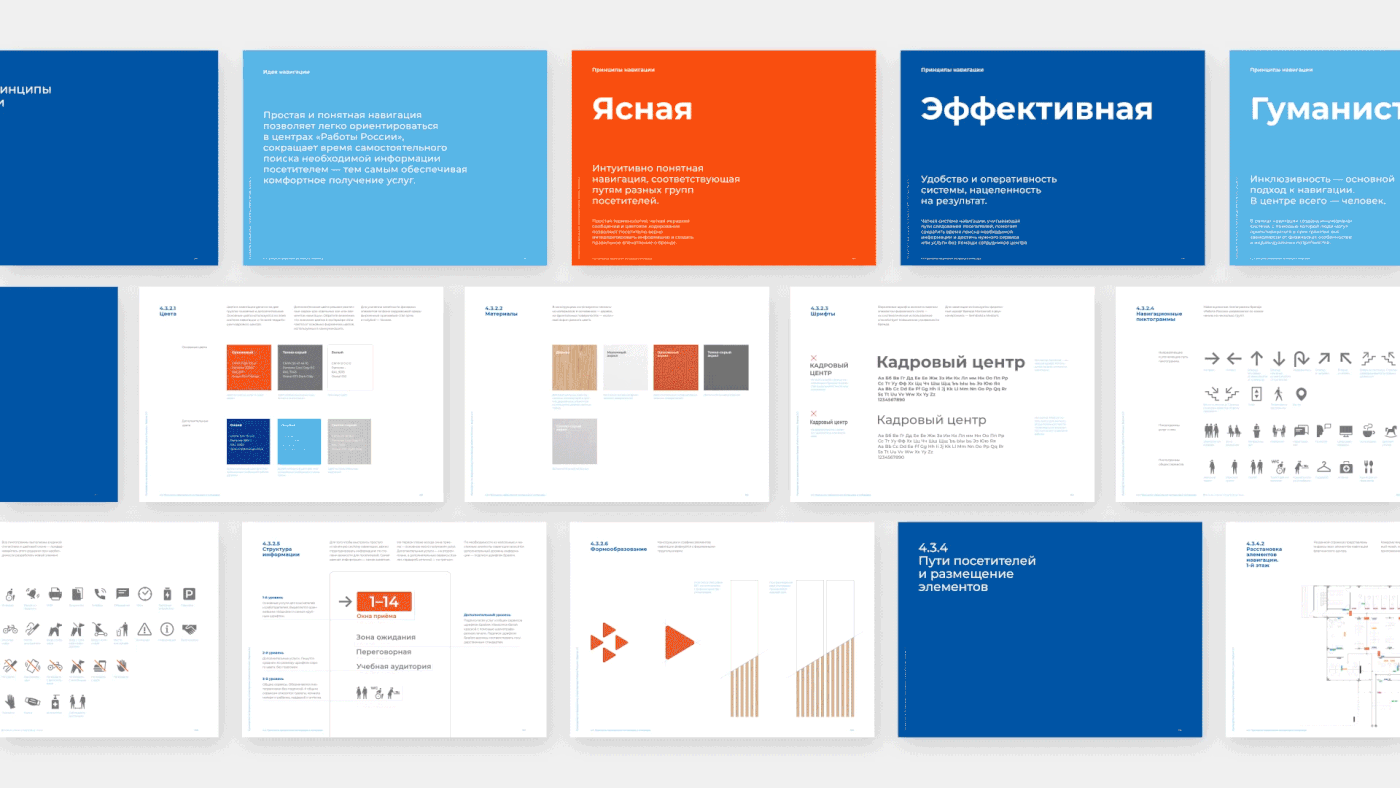
Part 1: visual style and communications
Part 2: inclusive navigation
Part 3: interior and exterior
Project team
Alyona Bystrova, Producer
Ilya Lazuchenkov, Managing partner
Egor Myznik, Creative director and partner
Andrey Zhaglin, Art director
Egor Myznik, Creative director and partner
Andrey Zhaglin, Art director
Maria Pechkurenko, Art director
Evgeniya Khludentsova, Designer
Oleg Ahn, Content producer
Olga Barkova, Senior strategist
Anna Agapova, Strategist
Anna Volkova, Motion designer
Nikita Boldyrev, Architect
Tatiana Maksimova Visualization Studio
Ekaterina Andreevna Polyakova, Head of Tambov branch of the All-Russia Association of the Blind, secret counsellor
Ekaterina Anatolievna Merkulova, Deputy director of the Federal Center of Competences in employment sphere
Alina Andreevna Ogneva, Division manager of the information provision and communications of the Federal Center of Competences in employment sphere
Andrey Mikhailovich Zhdanov, Division expert of the information provision and communications of the Federal Center of Competences in employment sphere
Alina Andreevna Ogneva, Division manager of the information provision and communications of the Federal Center of Competences in employment sphere
Andrey Mikhailovich Zhdanov, Division expert of the information provision and communications of the Federal Center of Competences in employment sphere

